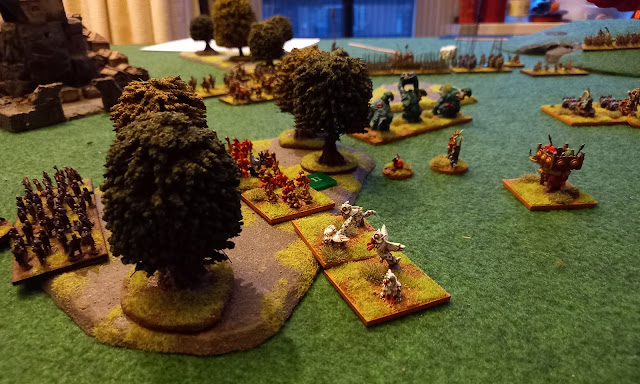Anyone who has spoken to me about my different archaeological interests for any length of time knows that I am rather partial to Kilikians (I've published a number of articles on the Tarkondimotid dynasty for a start). So when it was time to dip my toe in the water and get my end of ProjectSeleukid going, it was not a difficult decision to start with Kilikian light infantry.
These Taurus highlanders (admittedly only half of Kilikia was mountains - but the rest of it was fringed with mountains) appear in all three detailed breakdowns of the Seleukid army, at Raphia, Magnesia and Daphne, and parts of Kilikia remained within the Seleukid orbit from the 290s right down to the early 1st century BC.
Helpfully we have a couple of references to ancient Kilikian light infantry equipment. Unhelpfully, the most detailed account comes from Book 7 of Herodotus, two and a half centuries before Magnesia. Still, it provides a guide.
The [Pisidians] had little shields of raw ox-hide. Each man carried two wolf-hunter’s spears. They wore helmets of bronze, with the ears and horns of oxen represented in bronze, and crests in addition. Their legs were wrapped round with strips of purple stuff. In this country is a place of divination sacred to Ares. The Kabeleeans, who are Maionians, and are called Lasonians, had the same equipment as the Cilicians. When I come in my recording to the place of the Cilicians, I will say what it was. The Milyans had short spears and garments fastened by brooches. Some of them carried Lykian bows, and they wore caps of skin on their heads. The commander of all these was Badres son of Hystanes.
The Cilicians furnished a hundred ships. These, too, wore on their heads the helmets of their country, carrying bucklers of raw ox-hide for shields, and clad in woollen tunics. Each had two javelins and a sword fashioned almost the same as the single-edged swords of Egypt. These Cilicians were in old time called Hypachaians, and took the name they bear from Kilix a Phoenician, son of Agenor. The Pamphylians furnished thirty ships: they were armed like Greeks. These Pamphylians are descended from the Trojans of the dispersal who followed Amphilochos and Kalchas.
Herodotus 7.91
So, small round shields of ox-hide, helmets, javelins and swords - preferably single bladed. That is a good start. The "helmets of their country" line sounds distinctive, but there is no indication what makes them distinctive. At 7.76 Herodotus talks about the Pisidian helmets with horns and ears. Pisidia neighboured Kilikia to the west, and both populations appear to have been Luwian, so I was tempted to try to incorporate a horned helmet somewhere.
Speaking of the parade at Daphne a generation after Magnesia, Polybius has the following to say:
This same king [Antiochos IV] when he heard of the games celebrated in Macedonia by Aemilius Paullus the Roman general, ambitious of surpassing Paullus in magnificence sent out embassies and sacred missions to the towns to announce the games he was about to give at Daphne, so that people in Greece were very eager to visit Antioch then. The festival opened with a procession composed as follows: It was headed by five thousand men in the prime of life armed after the Roman fashion and wearing breastplates of chain-armour. Next came five thousand Mysians, and immediately behind them three thousand Cilicians armed in the manner of light infantry (euzonoi), wearing gold crowns. Next came three thousand Thracians and five thousand Gauls. They were followed by twenty thousand Macedonians of whom ten thousand bore golden shields, five thousand brazen shields and the rest silver shields.
Not especially helpful, but it does confirm the role of light infantry as opposed to phalangites, thureophoroi, archers or slingers. Javelins, spears and pelta seem about right then.
Angus McBride is about the only person to have attempted a reconstruction that I have come across. As his reconstruction is of parade day at Daphne, he has opted for a gold wreath rather than helmet, and a bronze-faced pelta. I don't know his reasoning for having a metal shield - it is plausible that there were developments since the Herodotean account, but this isn't something that appears in the historic records.
And thus we return to my 28mm interpretation. Starting with Victrix Greek peltasts, I replaced a few heads with later, Hellenistic, helmets from a phalangite sprue, and also replaced all shields with phalangite peltas, painted as ox-hide rather than bronze-faced. I gave the unit bulls horns, inspired by Herodotus' Pisidians, and kept chiton colours to muted variations of red and black.
For the fun, I also ordered a Greek priest reading a wee goat's entrails from 1st Corp. I removed the huge resin plinth and just kept the altar to represent some pre-battle divination.

































